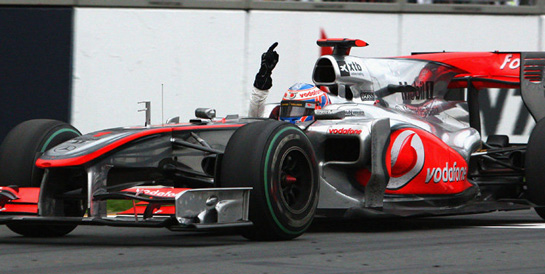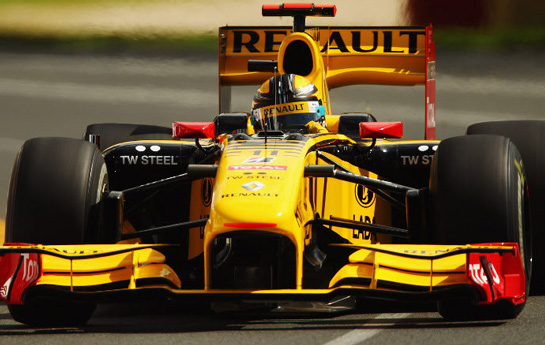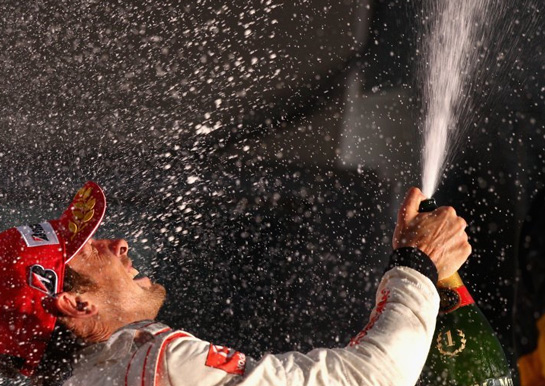After the boring “Dustbowl” of Bahrain, the thrilling “Fireworks” of Australia. There’s big Hope for 2010.
By Philippe Defechereux
We’re now really off to the races.
The pre-season was highly exciting, with all those new teams, and the many driver switches –Jenson Button to McLaren and Alsonso to Ferrari being the top examples and, of course, the return of “Der Kaiser” (Schumi) after a three-year absence, but this time with Mercedes-Benz.
The new regulations, including an in-race refueling ban, tighter controls, and the disappearance of the highly expensive and very dubious KERS system, added to the heightened expectations. The vanishing of Max Mosley cleaned up the act.
Then there was Bahrain two weeks ago. A country where camel races should be the only form of racing; where there is absolutely no Motorsport tradition; where you’ll find a geometric track in the desert, a place of no return. And there were none. It was boring from start to finish – except a valve failure on Vettel’s Red Bull, then in the lead- imagine, a valve failure was all the excitement in Bahrain.
After such a public-relations disaster, the F1 pitlane went into one of its frequent existential quest for magic fixes. Well-meaning hotheads demanded immediate rule changes. Cooler heads advised patience – including Bernie. Now that we’ve seen the Melbourne Grand Prix in Australia, the cooler heads seem to have been right. We just witnessed one of the most exciting Formula 1 race in a decade; with a little help from the weather gods. Let’s provide a few highlights (a detailed race report is available on this same issue).
First, all the cars look great again. Lying low on the track, superbly shaped, muscular, and equipped with wide, slick tires. They truly look like fully-armed F-16’s flying at ground level. Next, “pit-stop strategy” (for refueling) has disappeared. What a relief! Races will not be won or lost again in the pitlane based on fuel “strategies” decided in advance by super-computers. What would Fangio have said of that?
Finally, we have four former world champions on the grid: Button, Alonso, Hamilton, and Schumacher, each driving competitive cars. Right behind their tail pipes are strong outsiders like Red Bull’s Vettel, Ferrari’s Massa, Renault’s Kubica and Mercedes’ Rosberg. No F1 grid has been so rich in quality or talent in over a decade.
Now unto the grid, just before the start. Probably angered by the hot, dry and sandy condition of Bahrain and the criticisms that followed, the weather gods intervened. It seems they decided to do a really fine job in Melbourne: throwing a light but steady shower just before the warm-up lap and lasting for about 12 laps, then a let up, but with a constant threat of more moisture – which never happened. All the super-computers were thrown off base and the teams had to improvise. Perfect for spectators and viewers. The drivers were on their own.
One man took a big gamble: the 2009 World Champion, Jenson Button. Often accused of being over-cautious, he dove for the pits to put on slicks when the track was still wet, but a dry line was clearly forming. That was his decision. His first lap on the new tires was a little iffy, but he soon started gaining 3 seconds a lap on everyone else, still on intermediates. Within two laps, all the other drivers dove for the pits to switch to slicks. It was too late, but for Vettel, still in the lead. Button had passed everybody else.
Well, you already know the rest: poor Vettel, like in Bahrain, suffered yet another Red Bull mechanical failure and ended up in a gravel pit. Jenson could now coast to victory in his inimitable, smooth driving style, sparing his tires and giving a formidable demonstration. His rival and teammate Hamilton, who kept regaining positions, only to lose them again in various incidents, was seething and even publicly castigated his team for calling him in for a second set of slick tires. He finished an embarrassing 6th, behind Rosberg and Alonso.
On an interesting technical note, the new Virgin Racing team had to confront an unexpected challenge upon arrival in Melbourne. Their designers and engineers, for lack of a wind tunnel, had the entire new car designed by a super-computer. After they arrived on the track, facing one of the longest races of the season, they quickly turned red-faced, and not because of the sun. That’s when they realized their computer-designed chassis held a fuel tank not large enough to keep their cars going the entire race… Neither car finished and a redesign is in the works.
So for the rest of the season, we foresee three great types of battles being fought simultaneously: first, the men versus the machines (human brains vs. super-computers); next, fierce intra-top-team competition; and third, intense rivalry between teammates: Alonso and Massa at Ferrari; Vettel and Webber at Red Bull; Button and Hamilton at McLaren, plus Rosberg and Schumacher at Mercedes-Benz. Kubica and his Renault, who finished second in Melbourne, could be the wild card in this new game. His teammate Petrov, in contrast, is clearly is the new Piquet Jr. on the grid.
In conclusion, Australia, proved that on a great track and with a little help from the weather gods, the new 2010 Formula 1 has a leading set of cars and drivers that can deliver one of the best racing season in recent memory. The rest of the field behind the top teams makes for interesting incident and accident shots. A perfect show?
See you in Malaysia, April 4th.


